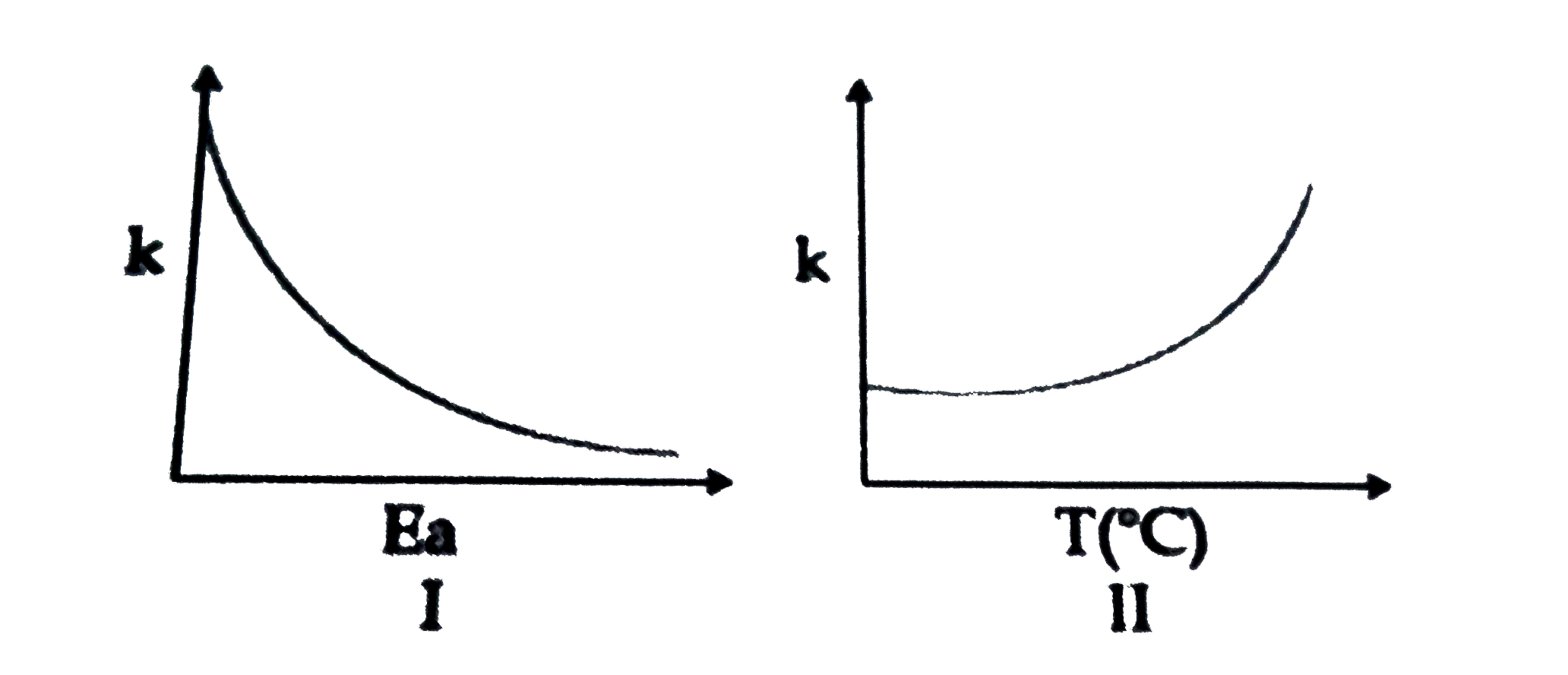In Arrhenius equation , k=AeEaRT , A may be termed as rate constant .
When 100% reactant will convert into the product
When the temperature becomes high
When the fraction of molecule crossing over the energy barrier becomes unity
At very low temperature
The correct Answer is:D
To solve the question regarding the Arrhenius equation k=Ae−EaRT, where A is termed as the rate constant, we will analyze the components of the equation and their implications.
1. Understanding the Arrhenius Equation:
The Arrhenius equation relates the rate constant k of a chemical reaction to the temperature T and the activation energy Ea. The equation is given by:
k=Ae−EaRT
where:
- k = rate constant
- A = pre-exponential factor (also known as the frequency factor)
- Ea = activation energy
- R = universal gas constant
- T = absolute temperature in Kelvin
2. Identifying the Role of A:
In the context of the Arrhenius equation, A represents the frequency factor, which is a measure of the frequency of collisions between reactant molecules. It is a constant that depends on the specific reaction and is influenced by factors such as molecular orientation and the probability of successful collisions.
3. Behavior of k with Temperature:
As the temperature T increases, the term EaRT decreases, leading to an increase in the exponential term e−EaRT. This results in an increase in the rate constant k. Therefore, we can conclude that:
- At very high temperatures, the value of k approaches A because the exponential term approaches 1.
4. Effect of Activation Energy:
The activation energy Ea plays a crucial role in determining how sensitive the rate constant k is to changes in temperature. A higher Ea means that the reaction is more sensitive to temperature changes, while a lower Ea means that the reaction rate becomes less dependent on temperature.
5. Conclusion:
In summary, the Arrhenius equation indicates that the rate constant k becomes equal to the frequency factor A at very high temperatures or when the activation energy Ea approaches zero. Thus, we can conclude that:
- The rate constant k can be termed as equal to A under conditions of high temperature or low activation energy.
The Arrhenius equation relates the rate constant k of a chemical reaction to the temperature T and the activation energy Ea. The equation is given by:
k=Ae−EaRT
where:
- k = rate constant
- A = pre-exponential factor (also known as the frequency factor)
- Ea = activation energy
- R = universal gas constant
- T = absolute temperature in Kelvin
In the context of the Arrhenius equation, A represents the frequency factor, which is a measure of the frequency of collisions between reactant molecules. It is a constant that depends on the specific reaction and is influenced by factors such as molecular orientation and the probability of successful collisions.
As the temperature T increases, the term EaRT decreases, leading to an increase in the exponential term e−EaRT. This results in an increase in the rate constant k. Therefore, we can conclude that:
- At very high temperatures, the value of k approaches A because the exponential term approaches 1.
The activation energy Ea plays a crucial role in determining how sensitive the rate constant k is to changes in temperature. A higher Ea means that the reaction is more sensitive to temperature changes, while a lower Ea means that the reaction rate becomes less dependent on temperature.
In summary, the Arrhenius equation indicates that the rate constant k becomes equal to the frequency factor A at very high temperatures or when the activation energy Ea approaches zero. Thus, we can conclude that:
- The rate constant k can be termed as equal to A under conditions of high temperature or low activation energy.
Topper's Solved these Questions
- CHEMICAL KINETICSBook:AAKASH INSTITUTE ENGLISHChapter:CHEMICAL KINETICSExercise:ASSIGNMENT (SECTION C : Previous Year Questions)
Explore 62 Videos
- CHEMICAL KINETICSBook:AAKASH INSTITUTE ENGLISHChapter:CHEMICAL KINETICSExercise:ASSIGNMENT (SECTION D : Assertion - Reason Type Questions)
Explore 15 Videos
- CHEMICAL KINETICSBook:AAKASH INSTITUTE ENGLISHChapter:CHEMICAL KINETICSExercise:ASSIGNMENT (SECTION A : Objective Type Questions)
Explore 50 Videos
- CHEMICAL BONDING AND MOLECULAR STRUCTURE Book:AAKASH INSTITUTE ENGLISHChapter:CHEMICAL BONDING AND MOLECULAR STRUCTURE Exercise:Assignment Section J (Aakash Challengers Questions)
Explore 10 Videos
- CHEMISTRY IN EVERYDAY LIFE Book:AAKASH INSTITUTE ENGLISHChapter:CHEMISTRY IN EVERYDAY LIFE Exercise:Assignment ( SECTION - A)
Explore 45 Videos
Similar Questions
In the Arrhenius equation, k=Aexp−Ea/RT, A may be termed as the rate constant at…………. .
View SolutionIn Arrhenius equation , K=Ae−Ea/RT . The A is
View SolutionDefine rate constant (k) ?
View SolutionIn the Arrhenius equation: k=Aexp(−Ea/RT), the rate constant
View SolutionThe temperature dependence of rate constant (k) of a chemical reaction is written in terms of Arrhenius equation, k=Ae−Ea/RT) Activation energy (Ea) of the reaction can be calculate by plotting
View SolutionArrhenius equation k=Ae−Ea/RT If the activation energy of the reaction is found to be equal to RT, then [given : 1e=0.3679]
View SolutionThe variation of rate constant with temperature is given by the integrated from of the Arrhenius equation, log10k=−Ea2.303RT + constant
where k = rate cosntant and Ea is the experimental activation energy. If for a certain reaction, log10k=−3163.0T+11.899, calculate Ea.
View SolutionConsider the given plots for a reaction obeying Arrhenius equation (0∘C<T<300∘C) : (k and Ea are rate constant and activation energy, respectively)

View SolutionThe Arrhenius equation is given as k=Ae−Ea/RT. What do k, A and E stand for? What are their units for a first order reaction? What is the physical significance of A and E?
View SolutionRate of a reaction can be expressed by Arrhenius equation as:
k=Ae−Ea/RT
In this equation, Ea represents:
View Solution